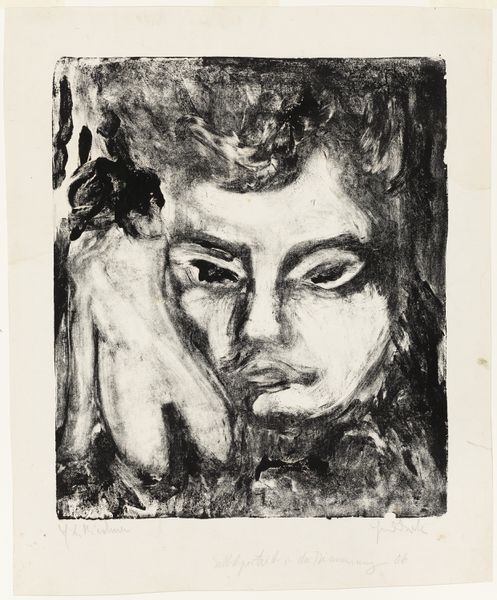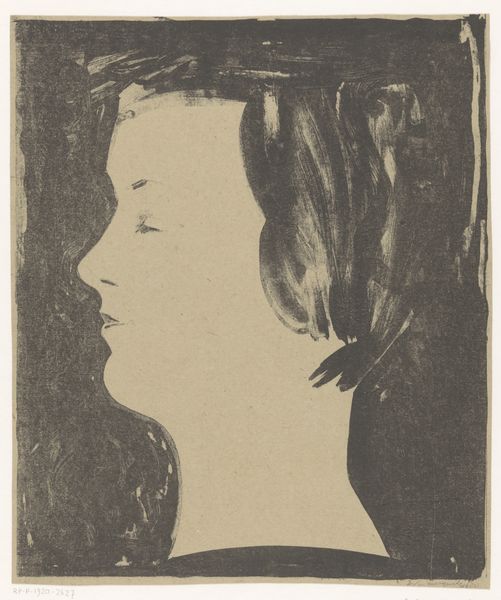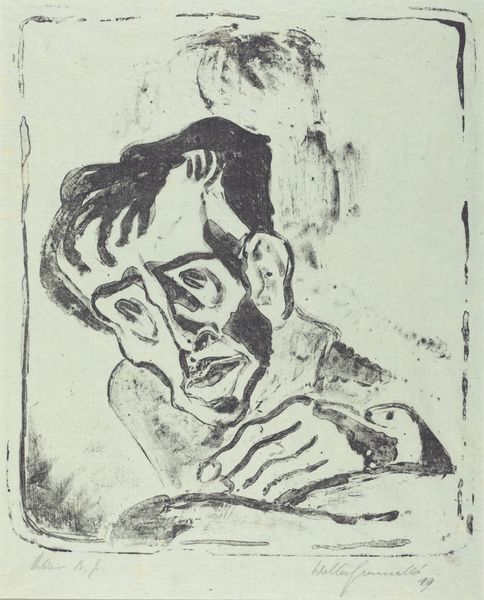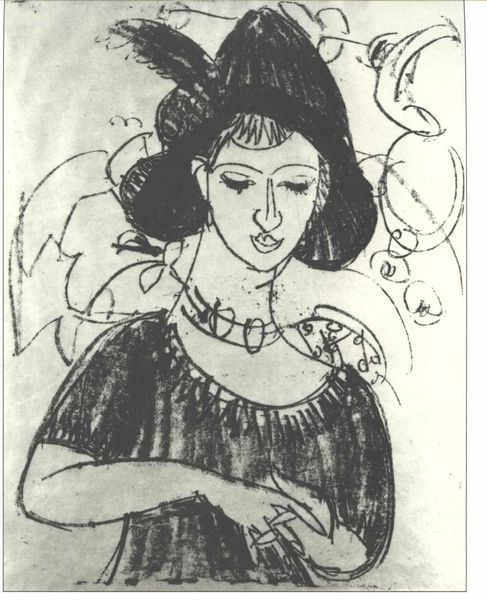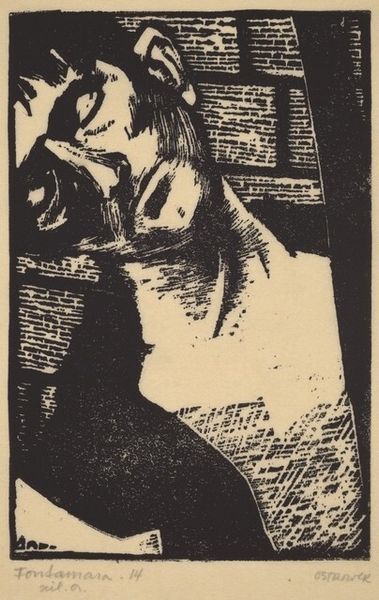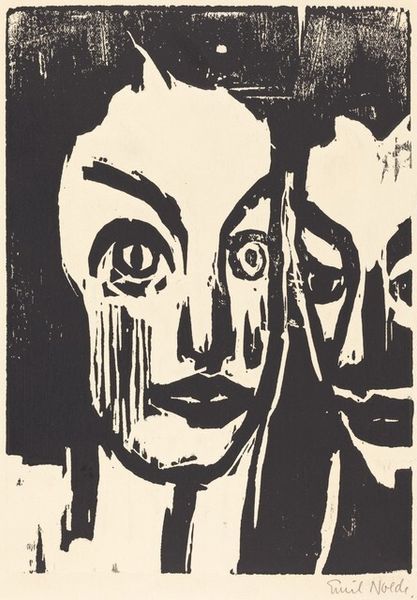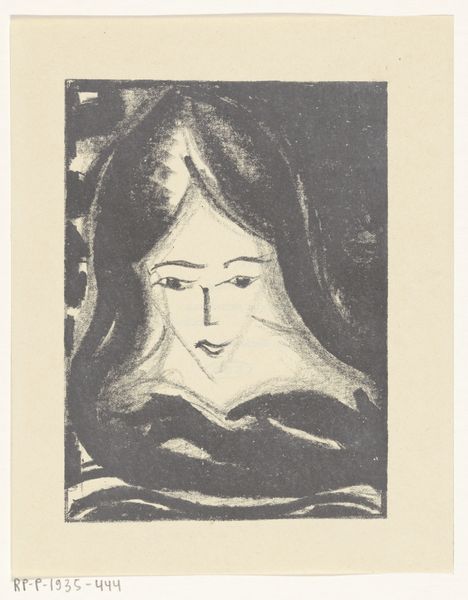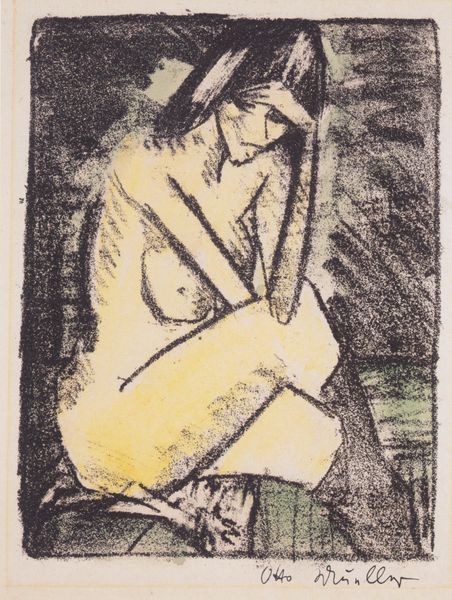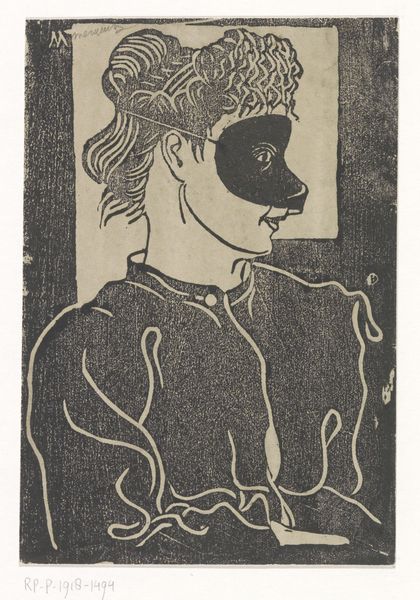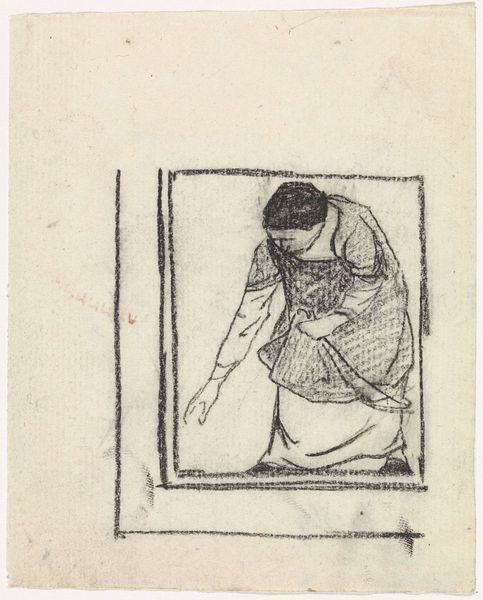
drawing, ink
#
portrait
#
drawing
#
ink drawing
#
german-expressionism
#
figuration
#
ink
#
expressionism
#
portrait drawing
Copyright: Public Domain: Artvee
Editor: So, this is Ernst Ludwig Kirchner’s "Fränzikopf mit Puppe," created in 1910 using ink. The stark contrasts and angular lines give it a really intense, almost unsettling feeling. What do you see in this piece beyond the surface level? Curator: I see Kirchner using the female form and the doll as a mirror to reflect the anxieties of the era, anxieties that still resonate today. Expressionism was very much a response to the rapid societal shifts of the early 20th century – industrialization, urbanization, and the changing role of women. Editor: How does the doll figure into that interpretation? Curator: The doll is interesting, isn't it? Think of it as representing the objectification of women and also perhaps their infantilization within society. Kirchner, and other Expressionists, were deeply critical of the bourgeoisie and their constricting social norms. They wanted to shatter conventions, challenge comfortable realities, and expose what they saw as the raw, often ugly, truth beneath the surface. Editor: That makes sense. I was focused on the individual portrait, but the doll really shifts the context to be about broader issues. Curator: Exactly! It's not just about Fränzi; it's about the constraints and expectations placed on women in that period, the way they were perceived, and how they navigated a changing world. What do you think Kirchner is saying with the intense black ink? Editor: It gives the image a weight and depth that maybe suggests a heavier message. I’m seeing how his style amplified these ideas. Curator: It's a powerful visual language, isn't it? Remember that art is never made in a vacuum. Understanding the historical, social, and political climate is crucial for deciphering the true message of a work. Editor: I'll definitely keep that in mind from now on. Thanks, that was so insightful. Curator: Likewise, a good reminder to see art as a conversation with the world.
Comments
No comments
Be the first to comment and join the conversation on the ultimate creative platform.
